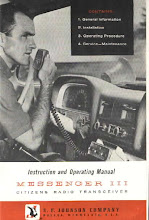Robinson has been missing, in prison for an unspecified crime, and has returned to survive in the margins, in the periphery of London. The theme of borders is pervasive in a film whose geographical journey takes us from the boarded up dwelling haunted by Robinson to Newbury and whose historical journey thereby transports us from the financial meltdown in 2008 to the enclosures of the 16th century and the Swing riots of the 1830s. The intellectual journey is always one of the pleasures of a Patrick Keiller film and his guides are, not surprisingly, Walter Benjamin for the flaneurist predilections of Robinson and Fredric Jameson for a Marxian account of capital, property, commodities and periodisation.
The film, then, deliberately begins in a capitalism that is ‘late’, with Robinson finding a new place, in the ruins, to haunt. Robinson too is late here, already in a sense dead in a film concerning itself with vestiges and cadavers, with waste ground and abandoned quarries, industrial infrastucture and defunct military sites.
To haunt is of course to frequent: living in the ruins of late capitalism, after the implosion, in the implosion. As Robinson’s diary, as the voice-over explains, discovered in a mobile home in the corner of a field following his disappearance and the abandonment of his research, notes the fortunes of oil prices, and of stock market share prices, he momentarily contemplates the possibility that we are about to witness a truly historic global shift.
Taking his cue from signs he can decipher in the landscape and trajectories suggested by his openness, in this case, to the suggestive and directional impetus of a motorway sign (with lichin, we later learn, shaped like a profile of Goethe), Robinson discovers the potential for a redemptive turn.
As if remembering Benjamin’s angel of history, in the guise of a biophilia dedicated to the world of plants and animals, and always it seems, centred on sites vacated by heavy industry and military installation or strategic military sites, Robinson’s sensibility offers redemptive possibilities in the most unlikely of locations. Thus, in an abandoned quarry, of great scientific value, he proposes to build an eco town.
If Robinson encounters any people on his journeys it is always only at a distance. His perambulations take him from location to location where he sets up a fixed camera and films the landscape – in a reprise of Turner he claims. There are no travelling shots, no zooms, pans or tilts, just the occasional reframing.
Turner of course, working with paint and canvas, had to suggest turbulence and the transformative force of climate and weather, whereas Keiller-Robinson can let the camera capture the contingencies of nature: leaves, flowers, rapeseed fields, poppy fields, butterflies all in their movements within and in and out of the frame, forming virtual and partial reframings. Within this context the quoting of Lynn Margolis is indicative of the film’s argument: morphogenesis considered as a model for an affective politics. Through the symbiosis will arise a new way of dividing the sensible (to invoke Rancière) and of responding to the landscape – part of the brief of the AHRC-funded project one of the fruits of which is this film. Various struggles against capitalism are evoked directly in the narration and in the images of abandoned places (either abandoned because of enclosures or the moving on of military-industrial strategic occupations – e.g. Greenham Common – or manufacture linked to nuclear armaments and delivery systems. At its heart the question of the commons, the common land restored at Greenham shown here with a pipe rusting amid the restored bucolic surroundings – a ruin amid life amid the ruins and the common land where earlier forms of resistance took place at Newbury – two enclosures of two common lands then, one early one late.

In its aftermath, global capitalism – the global market, the selling-off on national infrastructure and services such as a gas pipeline, the complex of invisible finance and the implosion of the economy all lead us to 2010 where we have a surprising result in the election and Robinson’s latest disappearance. This year also saw the release of another cinematic convict , Gordon Gekko. Needless to say Keiller’s meditation of the financial crisis provokes significantly more thought. Robinson’s crime remains unknown. The film ends with a close-up on a sign ‘Danger Road Failed’, a found poetic and surrealist amalgamation of Wall Street Crash and credit Crunch.




1 comment:
I have a certain attachment to this abandoned blog but I can't seem to access it to edit anymore. I erroneously say Robinson is holed up on the outskirts of London. Arghhh! it's Oxford of course.
Post a Comment